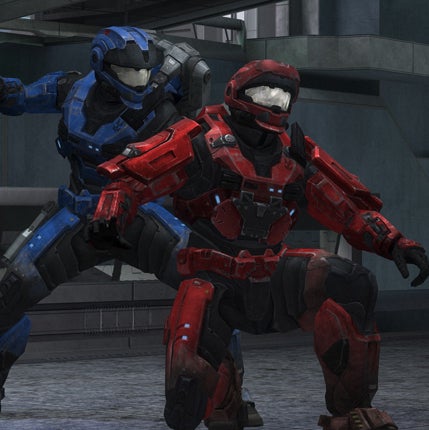Halo: Reach, Microsoft, Xbox 360 (£49.99)
Thumbs up: Halo takes Space Invaders to a whole new level

Your support helps us to tell the story
From reproductive rights to climate change to Big Tech, The Independent is on the ground when the story is developing. Whether it's investigating the financials of Elon Musk's pro-Trump PAC or producing our latest documentary, 'The A Word', which shines a light on the American women fighting for reproductive rights, we know how important it is to parse out the facts from the messaging.
At such a critical moment in US history, we need reporters on the ground. Your donation allows us to keep sending journalists to speak to both sides of the story.
The Independent is trusted by Americans across the entire political spectrum. And unlike many other quality news outlets, we choose not to lock Americans out of our reporting and analysis with paywalls. We believe quality journalism should be available to everyone, paid for by those who can afford it.
Your support makes all the difference.Microsoft's Halo is a space opera with a truly epic narrative arc, an arc supported by spin-offs, novelisations, comic books and fan fiction as well as the main entries in the franchise, of which the fourth, Halo: Reach, set in 2552, is a prequel.
But strip away the accompanying mythology and its plot can be boiled down to that of the 1978 arcade mega-hit of which it's a direct descendant, Space Invaders. In essence: there are aliens, and you want to shoot them before they shoot you.
Obviously, the terrifically polished Halo: Reach provides more for the eyes and ears to feast on. Martin O'Donnell's symphonic score befits the grandeur of the action set pieces, and the landscapes are more gorgeously rendered than ever before. But Noble 6, the all but anonymous new member of the Noble Team of human super soldiers through whose eyes you view the action, has less personality than the laser cannon at the bottom of the screen in Space Invaders. And while Halo: Reach has a whole new virtual planet to explore, the basic combat mechanism remains the same. Nip behind cover, then pop out to return fire. Its success derives from the purity of the action, and how effectively it hijacks the fight-or-flight response to supply hits of adrenalin. Scan the brain of a Halo player engaged in a frantic neon laser battle and I bet their reptilian cortex is lit up to match.
Halo: Reach generated $200m in sales on the day of its launch last month alone. (As an instructive, albeit unfair comparison, the highest grossing movie in history, Avatar, took $230m during its opening weekend.) What this means is that, day or night, there is no shortage of players to join you online in one of the game's many multiplayer arenas. Indeed, Reach is one of those games in which the single-player story campaign might be considered a mere bonus feature accompanying the main attraction: the opportunity to test your wits against other players – a dozen at a time from around the globe.
You can adjust your preferences so that Reach matches you with gamers of a similar skill level, similar tactical bent, and similar propensity to comment on the action. But online gamers are self-selecting anyway. They're all geeky, but Halo players are considered geekier than most. Given that its main competitor is the first-person shooter Modern Warfare 2, however, which prides itself on gritty realism and offers the queasy pleasure of re-enacting gunplay in real-world geopolitical hotspots, who can say that the gamer who prefers Halo's other-worldly topography and bright-coloured abstraction has not made the more refined judgement?
Join our commenting forum
Join thought-provoking conversations, follow other Independent readers and see their replies
Comments